What Hi-Fi? Verdict
If you like your movies and games big, bold and bright, there’s currently no better 4K TV than the QN95B
Pros
- +
Spectacularly bright and colorful
- +
Unprecedented contrast for LCD TV
- +
Sleek, monolithic design
Cons
- -
Weak new smart system
- -
Viewing angle limitation
Why you can trust What Hi-Fi?
Samsung wasn’t the first brand to bring Mini LED technology to the world when it launched its ‘Neo QLED’ range last year. TCL had beaten it to that landmark a full year before. We’d argue, though, that Samsung was the first brand to both make the technology mainstream (at least in Europe) and give us a full flavour of just what the technology might be capable of.
With this in mind, Samsung’s second generation of Mini LED TVs, as represented here by the QE65QN95B, arrives with the weight of serious expectation on its shoulders. Can it improve on the already high standards we saw last year? And will it at least hold its own against the ever-swelling ranks of premium OLED-based opposition?
Price
The QE65QN95B is Samsung’s flagship 65-inch 4K LCD TV for 2022 and, at launch, that was reflected in a meaty $3300 price tag. However, that price has already dropped: at the time of writing you can pick the 65-inch QN95B up for a more enticing $3000.
How this compares with rival sets is interesting. LG’s excellent G2 will currently set you back $2900 in 65-inch guise, while the even better Sony A95K QD-OLED is now available for $4000. Interestingly, Samsung’s own QD-OLED TV, the S95B, is priced lower than this QN95B Neo QLED, at $2600.
Design
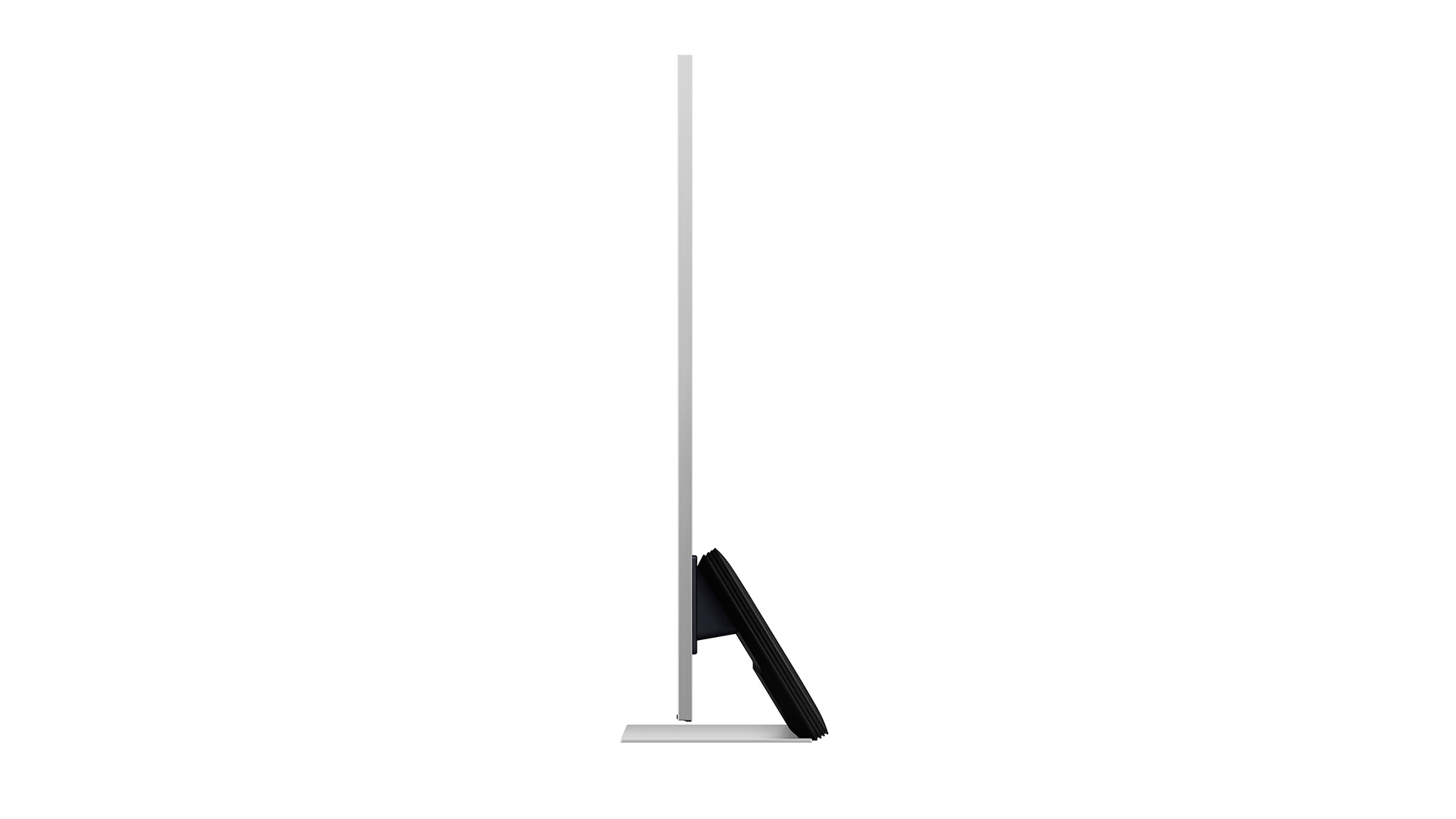
The QE65QN95B sees Samsung continuing to make a monolithic statement with its premium QLED TVs. The screen is encased in a frame so thin it’s barely visible when you’re sat right in front of the TV, and the rear panel is as uniformly flat as the screen. Samsung has managed to take a few millimetres out of the rear depth for 2022, too, making the already spectacular ‘Infinity’ design look even more futuristic.
The TV’s sides have obviously become slimmer as a result of the reduced depth, but what there is of them still look glamorous thanks to their silvery metallic finish.
Samsung’s even got your back if you hate the gaping 65-inch wide black hole that appears in your living room when you’ve switched the 65QN95B off. An Ambient Mode lets you play a ‘screensaver’ – one of your own photos, or your pick from a huge range of digitized artworks and short video screensavers carried on Samsung servers – in place of the usual ‘off’ blackness.
The 65QN95B’s flat rear panel carries an eye-catching roster of eight substantial mid-range drivers along its bottom edge, and you can also just about make out other smaller speakers tucked behind grilles ranged around the panel’s rear edges. This distinctive speaker configuration delivers a pretty high-end version of Samsung’s Object Tracking Sound (OTS) system, where specific effects in a sound mix are placed in the correct position to match the onscreen action.
To preserve its ultra-clean lines, Samsung has placed all of the QE65QN95B’s connections on an external box. This ‘One Connect’ attaches to the screen via a single, light-colored cable that carries power as well as picture and sound information. You can even slot the One Connect onto the back of the TV’s centrally mounted desktop stand mount for an essentially completely cable-free look.
Having connections housed on an external box that connects to the screen via a long single cable could also join the QN95B’s ultra-slim bodywork in being very helpful for anyone intending to wall-hang their TV.
Connections on the One Connect include four HDMI 2.1 sockets, all capable of handling the cutting edge gaming features of 4K 120Hz, VRR and ALLM. There are also three USBs for attaching hard drives for recording from the digital tuner, or playing multimedia from USB storage drives.
Note, though, that there’s no physical headphone port; only Bluetooth headphone support is provided unless you add some sort of adaptor.
Features
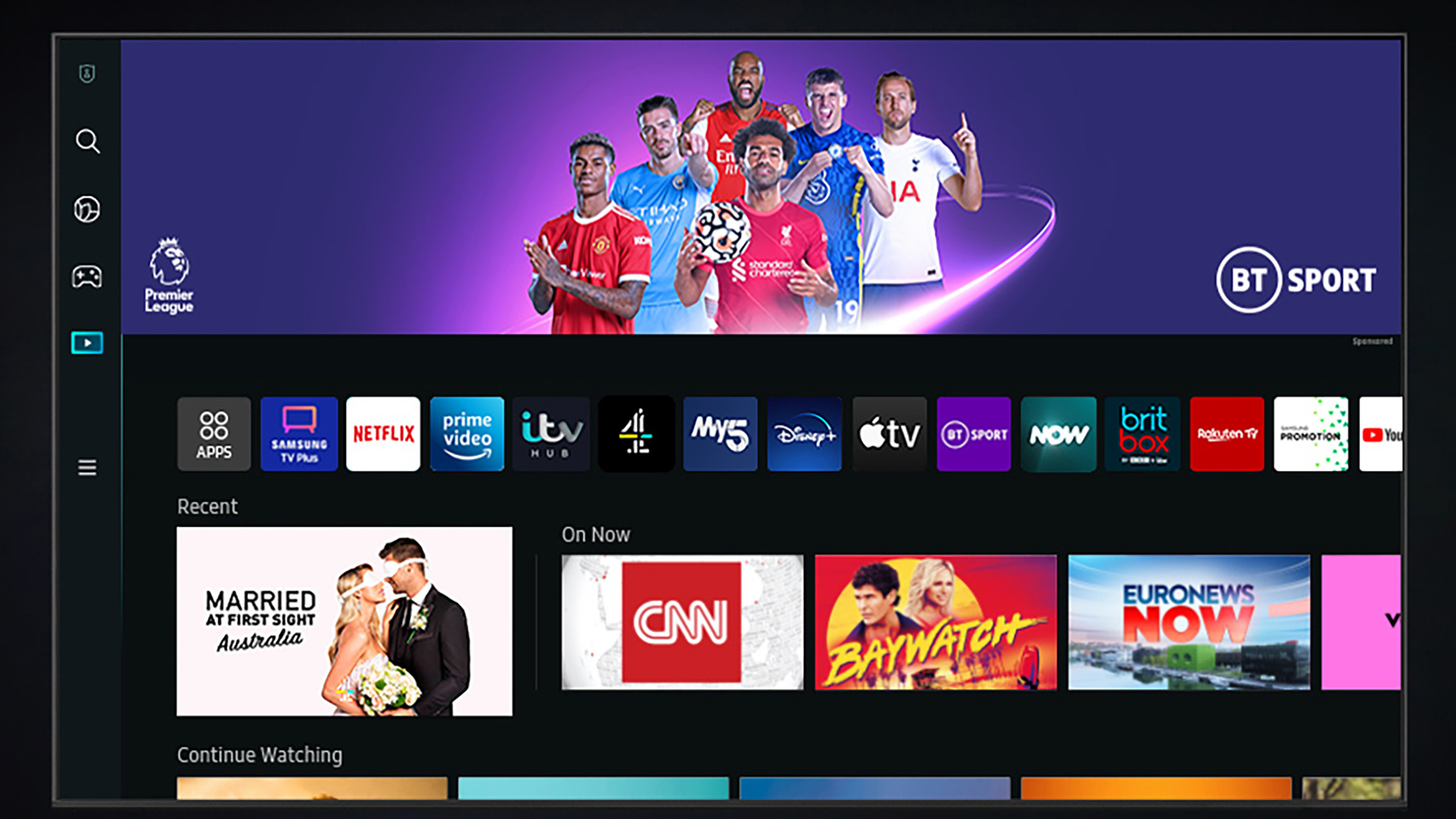
The QE65QN95B’s headline feature is the way it illuminates its screen with LEDs just one fortieth the size of those found in normal LED TVs. Far more of these mini LEDs can be fitted into the available screen area, potentially yielding brighter and more accurately lit pictures. Especially when the diddy LEDs are partnered, as they are in the QN95B, with a potent local dimming system. In fact, the 65QN95B is capable of outputting different amounts of light for any given frame from a mammoth 720 separately controlled LED zones.
Even 720 dimming zones is no match in light control terms for having every pixel produce its own light in the way that OLED technology can, of course. It should, though, lead to unprecedented levels of contrast by LCD standards. Especially as the QE65QN95B has a trick up its sleeve that OLED can’t match: huge amounts of HDR-friendly brightness. This measures in at not far shy of 3000 nits in the set’s most extreme Dynamic preset, while even the much more restrained and ‘accurate’ Filmmaker Mode hits 2000 nits. OLEDs, by comparison, typically peak at between 700 and 900 nits.
The only disappointing thing about the QE65QN95B’s Mini LED and local dimming set-up is that it’s basically the same as that of its predecessor. So where should we look for signs of improvement?
The single biggest answer lies in a new feature called Shape Adaptive Light Control. This greatly enhances the extent to which each lighting zone can adjust how light intensity is varied across the portion of the image it covers. Being able to, say, push the intensity of the light towards the middle of a dimming zone while fading it back at the zone’s edges has the potential to add more punch to bright highlights while simultaneously reducing the chance of unwanted backlight halos appearing around them.
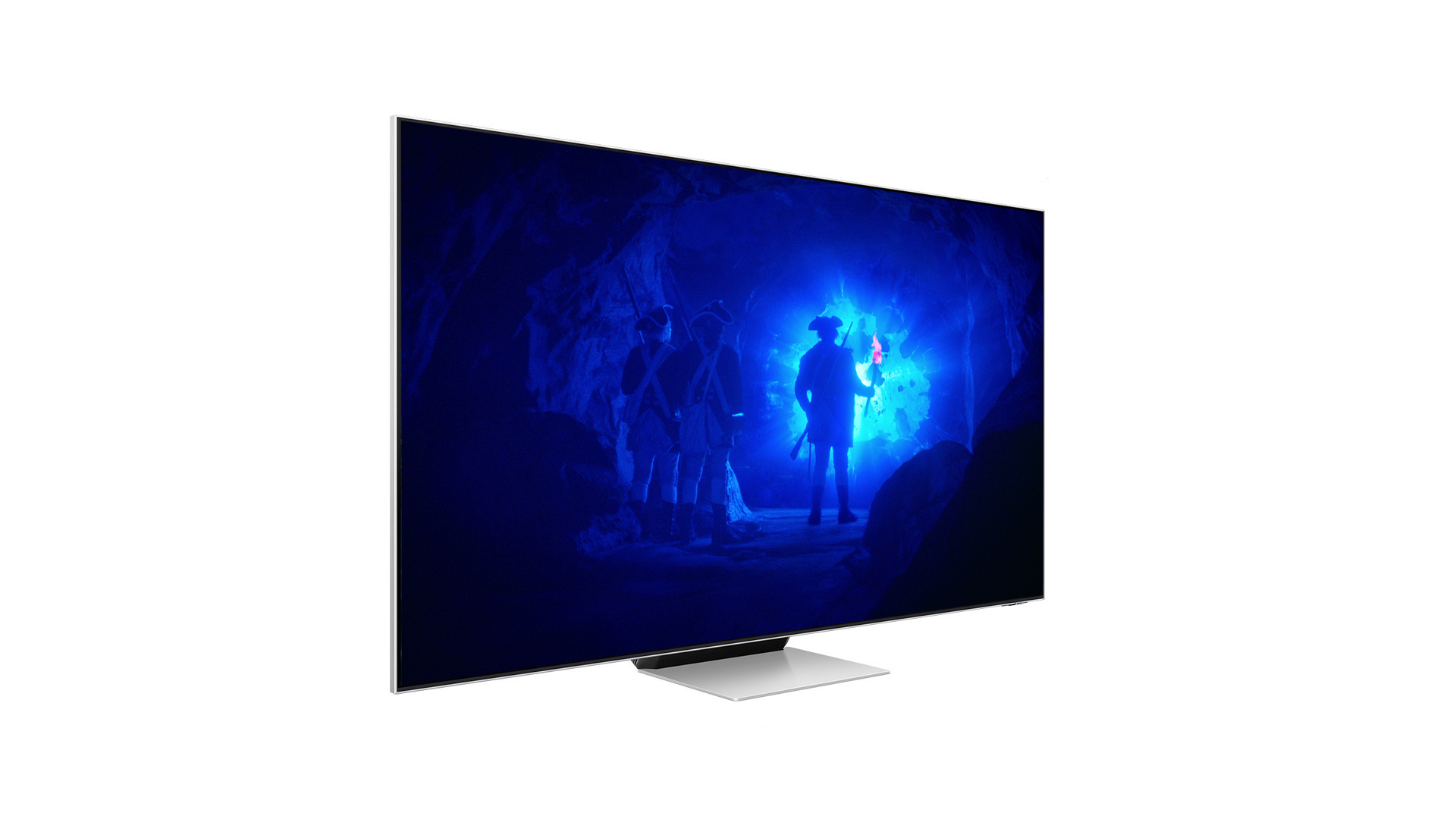
Screen size 65 inches (also available in 55in, 75in, 85in)
Type QLED
Backlight Mini LED
Resolution 4K
HDR formats supported HDR10, HLG, HDR10+
Operating system Tizen
HDMI inputs 4 (4 x 40Gbps HDMI 2.1)
Gaming features 4K/120, VRR, ALLM
ARC/eARC eARC
Optical output Yes
Dimensions (hwd, without stand) 32.7" x 57" x 0.7"
Samsung’s latest Neo QLED processor draws on even more AI-derived picture knowledge than 2021’s QN95As, too, with promised benefits to upscaling, color, near-black performance, and the set’s ability to recognise not just different image types but also different types of objects within images. The color and shadow detail improvements derive from a step up to a 14-bit picture processing system versus the previous 12-bit engine.
The new processor impacts the OTS audio system, too, thanks to a new face recognition tool that helps position vocals even more accurately on the screen. Even better, the QN95B is the first Samsung TV to sport Dolby Atmos decoding, for hopefully getting more clarity and soundfield precision from films and TV shows that have been mixed using Dolby’s ground-breakingly precise and immersive Atmos sound format.
Samsung’s Tizen-based smart system happily includes pretty much every streaming service you’ve ever heard of, plus plenty more you probably haven’t.
Samsung has decided in its infinite wisdom that 2022 is the year that it will try to fix a smart interface that wasn’t broken. The result is a cluttered, dictatorial full-screen interface full of advertising and content recommendations you’ll likely have no interest in. A million miles from the previous well organized, compact and heavily customisable interface. We can but hope that Samsung will be able to refine this system in future years, much as LG is already doing with the initially unhelpful full-screen change to its much-loved WebOS interface.
There’s better news for gamers as the comprehensive game-friendly connectivity mentioned earlier is backed up by support for the AMD Freesync Premium Pro version of VRR; input lag that gets as low as 10.4ms; three lag settings for different balances between lag and picture quality; plus a Game Dashboard that provides a handy shortcut to key gaming related tools and source information.
Picture
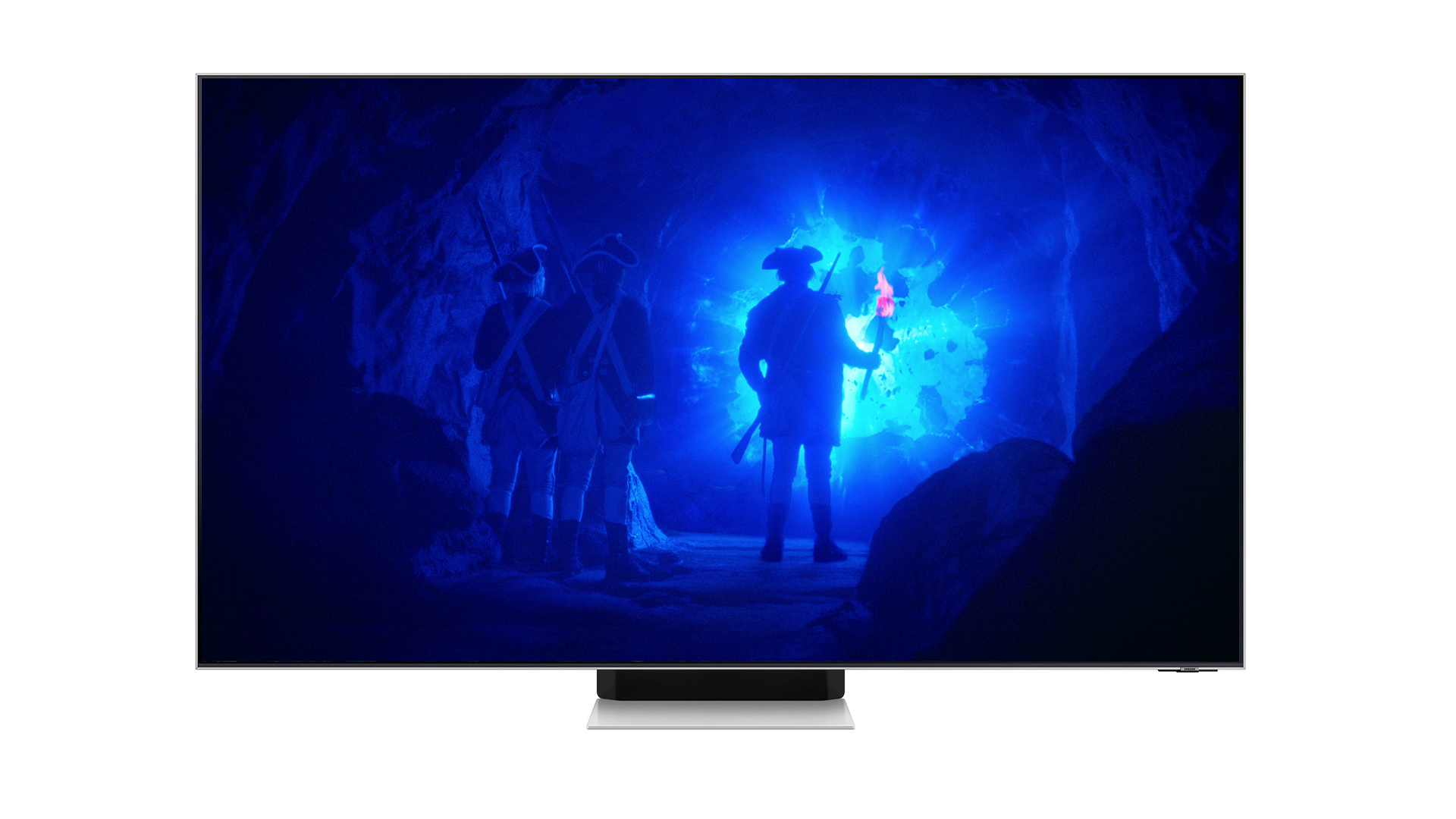
Concerns that not upping the number of Mini LEDs or dimming zones might result in Samsung’s second generation of Mini LED struggling to improve on the first are quickly torpedoed. Contrast, in particular, clearly enjoys a big step up, as the deepest, richest black colors in the LCD world share screen space with fearsomely intense bright highlights and colors.
This extra contrast is delivered, too, without any increase in the halos of light leakage around stand-out bright objects that’s so often a flaw with locally dimmed LCD TVs. In fact, where newly enriched white objects appear against a near black backdrop, there’s actually even less sign of backlight clouding than there was on the QN95A – that being a screen which itself set new contrast and backlight control standards for LCD technology.
Colors look even more explosive and rich than they have before on any Samsung QLED TV too, adding up to a huge volume of color that unlocks the full glories of today’s most aggressive wide color and high dynamic range content.
There’s subtlety to go with the verve, though, as the new 14-bit processing engine makes its presence felt in fantastically subtle color blends devoid of striping or blocking noise. Samsung has long had a reputation for producing some of the sharpest 4K pictures around, but the extra precision the QN95B now brings to color takes things to yet another level.
Samsung’s latest processing engine also enhances the brand’s reputation as one of the finest upscalers around, as HD and even SD content is converted to the QN95B’s native 4K resolution imperiously well. All the necessary pixels are added in all the right places, while all the nasty stuff upscaling can generate (exaggerated grain compression noise, imprecise colors, double edging, inconsistent line thickness and so on) is kicked into touch.
Put all of the QN95B’s strengths together and you have the most all-round potent and explosive demonstration of HDR’s potential that the TV world has given us to date.
The gorgeous picture drama isn’t restricted to video sources, either. The QN95B is also a phenomenal gaming display, with its love of color, brightness, sharpness and high contrast playing beautifully with the cutting edge graphics now obtainable from the Xbox Series X, PS5 and latest high-end PC graphics cards. Add to the visual splendour the almost complete removal of the backlight haloing that sometimes crept into games with the QN95A, plus a phenomenally quick response time (especially with 120Hz sources), and Samsung has emphatically earned itself a seat at the very top table of gaming performance.
There are a handful of relatively small picture niggles to report. First, while the TV can handle the HDR10, HLG and HDR10+ HDR formats, there’s no support for the popular Dolby Vision format. HDR content mastered in Dolby Vision will therefore play as HDR10, without the extra scene by scene data Dolby Vision can provide.
Viewing from an angle causes backlight blooming to appear where it was completely invisible when viewing the screen head on, too. Next, while shadow detail delivery has been improved from the QN95A, the QN95B’s Standard preset still suffers at times with a lack of insight into shadows. This is not, though, an issue with the slightly flatter, more restrained Movie and Filmmaker modes.
Motion causes excessive unwanted processing side effects if you stick with the default Picture Clarity setting. You’ll need to either just turn all motion processing off, or set a Custom mode with blur and judder reduction set quite low. Though you’ll still see the occasional ugly artefact even in this suggested Custom mode.
The Dynamic picture preset tends to push colors and bright areas so hard they no longer look natural – though this is easily remedied by simply sticking with one of the other presets. Finally, where a very bright but also small element of a picture appears against a very dark backdrop, the brightness of the intense element can be dialled down quite heavily. Presumably in a bid to ensure it doesn’t cause any of the backlight clouding problems that Samsung seems – understandably – obsessed with avoiding.
Not only did this also happen with 2021’s QN95A, though, it actually happened much more noticeably there because it tended to affect much bigger bright highlights than it does on the new TV. A clear and very welcome effect, we assume, of the QN95B’s Shape Adaptive Light Control technology.
In short, as well as being small change in the context of its all-round picture performance, many of the QE65QN95B’s niggles are either avoidable or correctible via picture settings. Or much less problematic than they were with Samsung’s 2021 Mini LED debutantes.
Sound
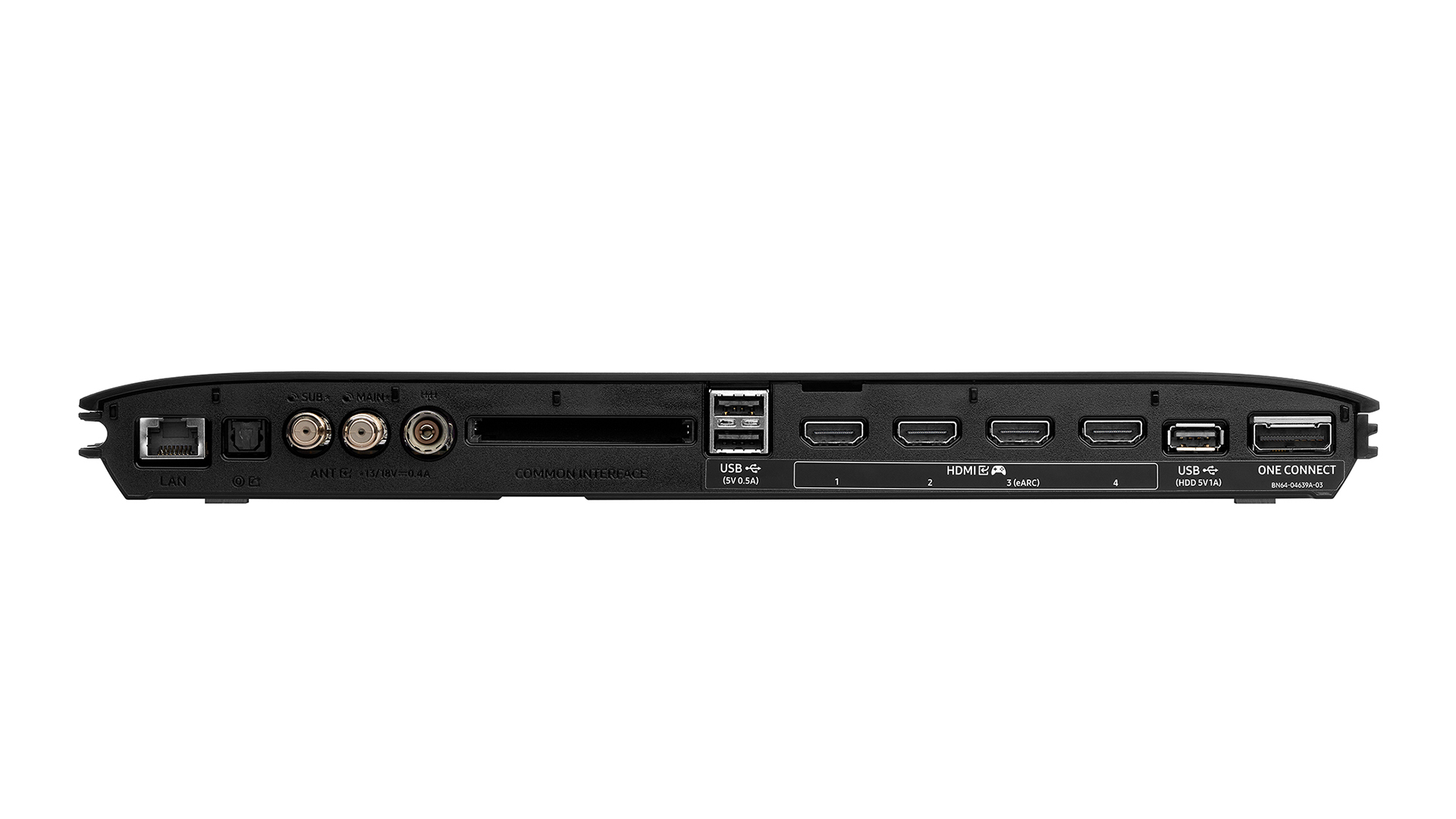
The QN95B’s sound is a classic mixed bag – though while it’s overall not in the same quality ballpark as the pictures it accompanies, it still qualifies as good by general TV audio standards.
Its biggest strength is how accurately the OTS system places sound effects. If two people are talking to each other from either side of the screen, for instance, you will hear one speaker’s voice coming from the correct place on the left, while the other voice appears to come from the correct place on the right. Even more cleverly, if either or both talkers start moving around the screen as they speak, the sound of their words moves with them.
This same principle applies to any noise-making object in the image, and the effect even works mildly beyond the edge of the screen, creating a small sense of a world beyond that pictured.
The TV can reproduce a passable amount of bass without succumbing to buzzing or breakdown, too, and fine audio details are plentiful and reasonably clean.
The main problem is that the sound just doesn’t escape forward from the screen. In fact, if anything the action seems to be taking place almost exclusively slightly behind the screen, meaning it fails to engage you to the same extent the pictures do.
As well as leaving you feeling a little detached from the action, the audio’s lack of forward impact also leaves the sound seeming a tad boxed in and unexpressive.
Verdict
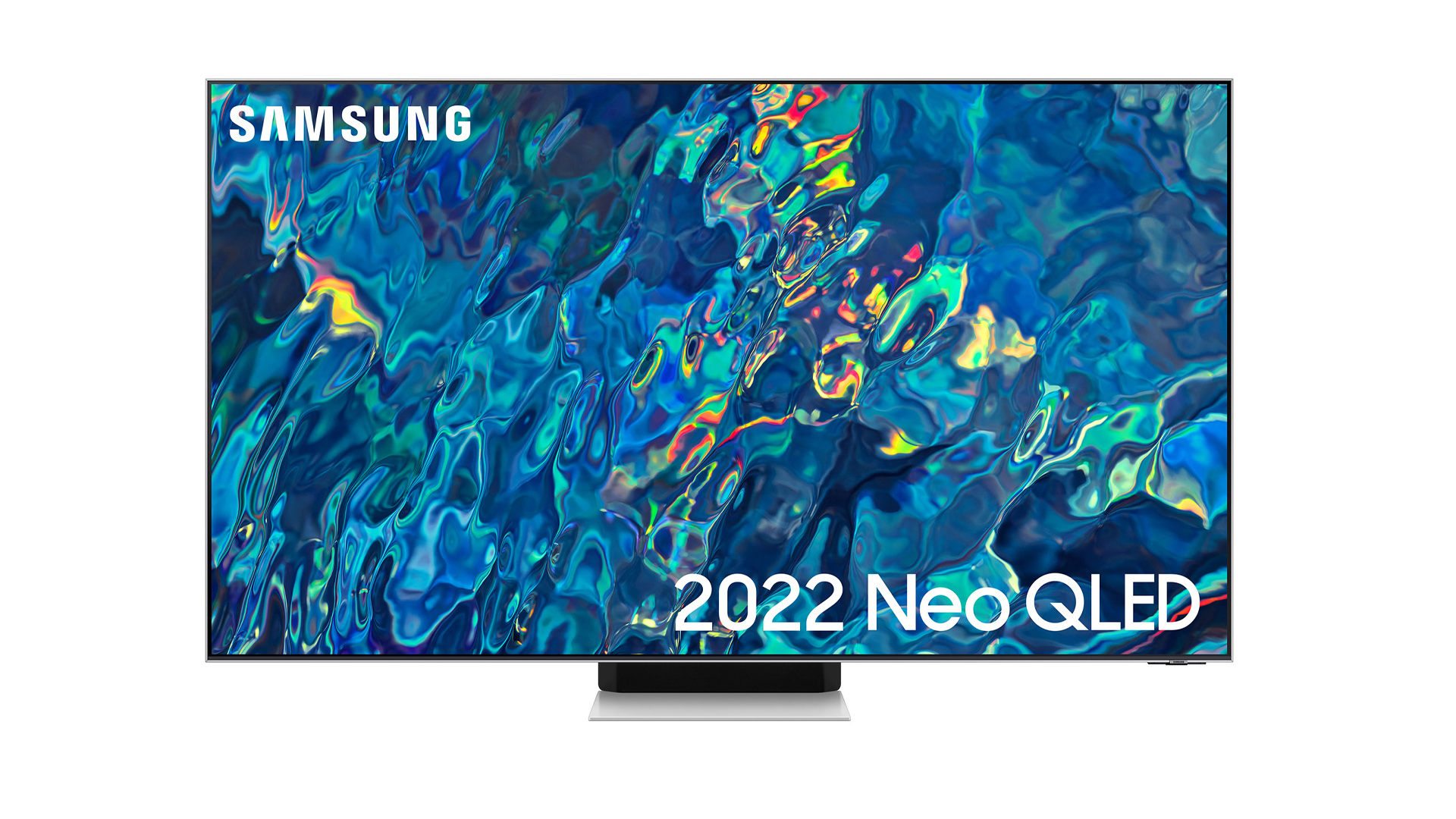
The QE65QN95B produces the finest picture quality we’ve ever seen from an LCD TV. In fact, if you’re into the sort of brightness levels and color volumes that are currently exclusively the domain of high-end LCD TVs, it’s the finest picture quality of any TV, period.
So while we remain rather baffled at this point by Samsung’s oddly noncommittal approach to its new and very impressive QD-OLED TVs, on the evidence of the QE65QN95B it’s easy to see why it has no intention of quitting on Mini LED any time soon.
SCORES
- Picture 5
- Sound 4
- Features 5
MORE:
Read our review of the LG OLED65G2
Also consider the LG OLED65C2
Read our Samsung QN65S95B
These are the best 65-inch TVs you can buy
John Archer has written about TVs, projectors and other AV gear for, terrifyingly, nearly 30 years. Having started out with a brief but fun stint at Amiga Action magazine and then another brief, rather less fun stint working for Hansard in the Houses Of Parliament, he finally got into writing about AV kit properly at What Video and Home Cinema Choice magazines, eventually becoming Deputy Editor at the latter, before going freelance. As a freelancer John has covered AV technology for just about every tech magazine and website going, including Forbes, T3, TechRadar and Trusted Reviews. When not testing AV gear, John can usually be found gaming far more than is healthy for a middle-aged man, or at the gym trying and failing to make up for the amount of time he spends staring at screens.
-
Alantiggger So a TV that WAS £OVER Two and a half grand, COULDN'T SHOW A DECENT PICTURE IF the viewer was off centre ?????????????????????????????Reply
WHAT ?
